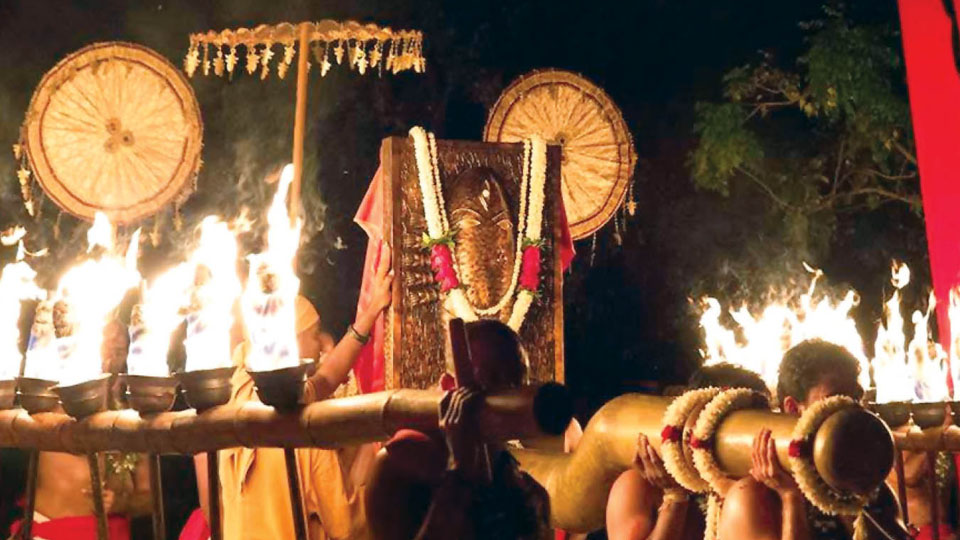By Author
Copyright starofmysore

By Sadhguru – Founder, Isha Foundation
In the yogic culture, the summer solstice, which falls in the month of June, marks the beginning of Dakshinayana. This means, in the Earth’s sky, the Sun begins to trace a southward movement in the northern hemisphere of the planet.
Similarly, the winter solstice which falls in the month of December marks the beginning of Uttarayana or the northern run of the Sun. The half of the year from the beginning of Uttarayana in December to the beginning of Dakshinayana in June is known as gnana pada. The other half of the year from the beginning of Dakshinayana to the beginning of Uttarayana is known as the sadhana pada.
The southern run is the phase of intimacy or the feminine; the earth is acting out her role as a woman. Festivals concerned with the feminine energy are celebrated only in these six months. The whole culture of this land was attuned to this. Every month, there is a festival of some kind.
In this feminine half of the year, September 23rd marks the autumnal equinox; and the first Amavasya or new moon after this is known as Mahalaya Amavasya. Mahalaya Amavasya is a special day dedicated to making an offering (shraadh), to express our gratitude to all the previous generations of people who have contributed to our life. During this time, in the Indian subcontinent, new crops would have just begun to bear yield. So their first produce is offered to the ancestors, as a mark of respect and thankfulness.
Mahalaya Amavasya is also the beginning of Devi’s time. The quarter from the Amavasya to the beginning of Uttarayana in December is known as the Devi pada. In this quarter, the northern hemisphere of the planet becomes ‘gentle’ because it is the quarter when the northern hemisphere receives the least amount of sunlight in the year. So everything becomes subdued; it is not ‘ON’ in a big way.
The day after Mahalaya Amavasya, marks the first day of Navaratri or Dussehra (Dasara), which is all about the goddess. In Karnataka, Dussehra is about Chamundi, in Bengal it is about Durga. Like this, it is about various goddesses in different places, but essentially Dussehra is about the goddess or the feminine divinity.
The nine days of Navaratri are classified as per the three basic qualities of tamas, rajas and sattva. The first three days are tamas, where the goddess is fierce, like Durga and Kali. The next three days are related to Lakshmi — gentle, but materially-oriented goddesses. The last three days are dedicated to Saraswati, which is sattva; it is related to knowledge and enlightenment.
Investing in these three will make your life in a certain way. If you invest in tamas, you will be powerful in one way; if you invest in rajas, you will be powerful in a different way; if you invest in sattva, you will be powerful in a completely different way. But if you go beyond all this, it is no longer about power, it is about liberation.
After Navaratri, the tenth and final day of Dussehra is Vijayadashami — that means you have conquered all these three qualities. You did not give into any of them, you saw through every one of them. You participated in every one of them, but you did not invest in any one of them; you won over them. That is Vijayadashmi, the day of victory.
[Sadhguru, a yogi, is a visionary, humanitarian and a prominent spiritual leader. An author, poet and internationally-renowned speaker, Sadhguru’s wit and piercing logic provoke and widen our perception of life. www.ishafoundation.org]



